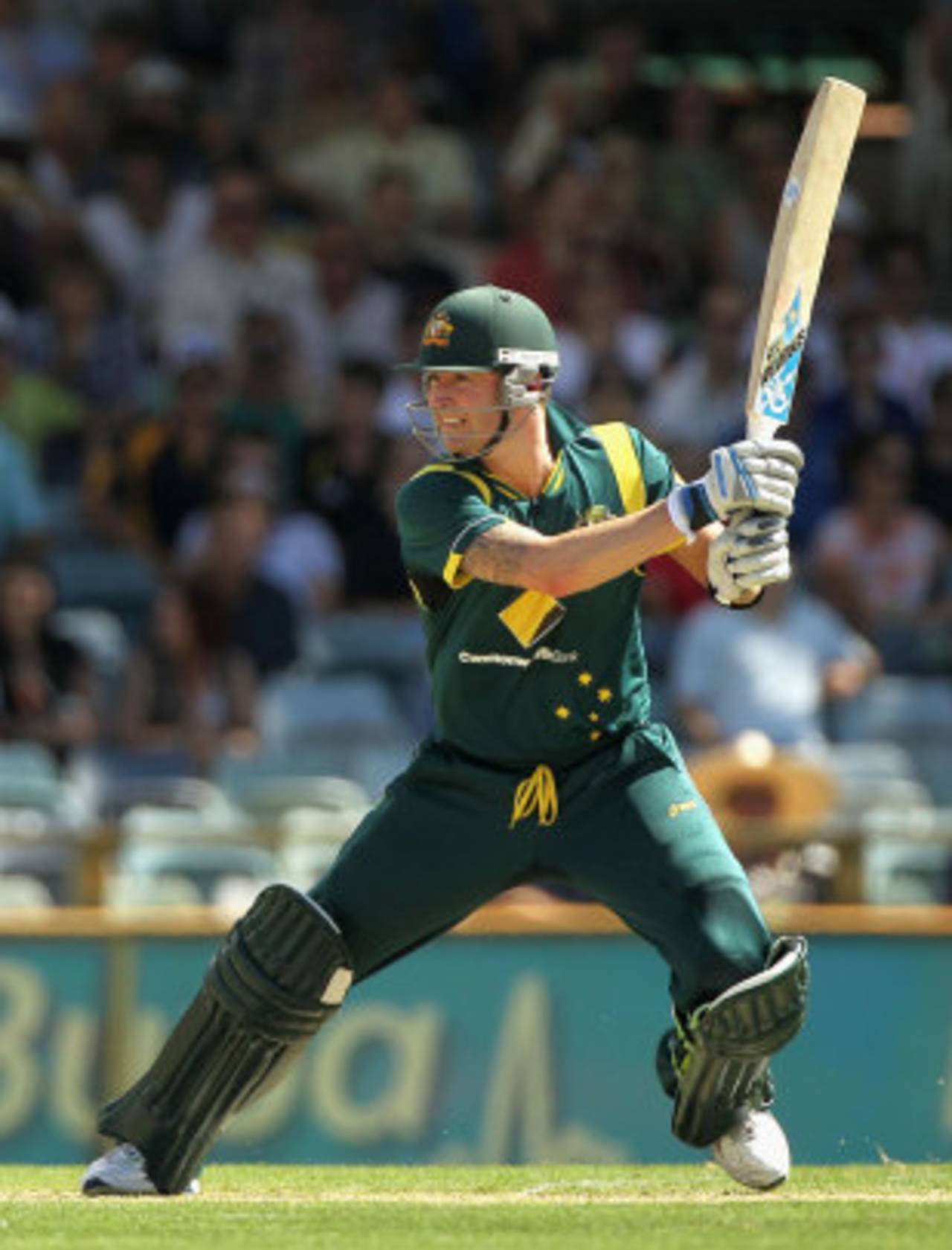Michael Clarke is a bit of an old-world ODI batsman. He doesn't hit the big sixes, he doesn't even think of switch hits, he is not going to score double-centuries, he has converted only six of his 56 scores of 50 or more into centuries; but the beauty of ODI cricket is it has space for him. To be more specific, modern ODI cricket, with new balls at each end, played on bowler-friendly surfaces, has space for him; especially, when he has around him big hitters who can make up for the slow rate in Powerplay or death overs.
The 2000s and Twenty20 nearly took out of the game the middle-order batsman who fought through innings to help his side play out their 50 overs. Such batsmen scored at not more than 70-75 runs per 100 balls, but they controlled the middle part of the innings. They worked the singles and couples, they set the stage for bigger hitters towards the end. When the limits were stretched in the 2000s, though, such batsmen went out of fashion. You either added big hits, or innovation, to your game or dropped out. Mahela Jayawardene, for example, modified his game and became a superb improviser. Younis Khan added the big hits to his manoeuvring of the field. Rahul Dravid went out of the game.
Now, though, a new, exciting legislation has been added to ODI cricket. Each ball gets only 25 overs old in an ODI. It might have an adverse effect on cricket in the subcontinent, reducing the effectiveness of spinners and reverse-swing, but it has made ODI cricket on lively pitches more interesting.
The Perth ODI between Australia and Sri Lanka was an example of that. "Little bit slower than we all expected," Clarke said of the pitch. "Some balls kissed off a lot faster than others. Hard to get your timing, we saw that with both teams." Also the ball kept seaming a touch all through the 99.5 overs, asking questions of batsmen, and the defining innings of the match came at a strike-rate of 64.77, and it included only four boundaries.
Clarke played that innings. He was not fluent. He was not even going to make up for his slow strike-rate in the final overs. He may have to an extent, had he remained till the end, but he would not have converted the strike-rate of 65 into 100, which has nowadays become the accepted norm for ODI batsmen. But Clarke hung in for long enough to get Australia to a total they could fight with.
Clarke also knows that this might not work in more batsmen-friendly conditions. Jonathan Trott in the World Cup is a good example. He played similarly, he was often England's best batsman against spin, but in the absence of big hitters around him, he was criticised for his 75-ball half-centuries. In tough conditions, these innings are inconspicuous but vital, but on flat tracks they become conspicuous.
"When I think of my own performance, I was a bit disappointed with the way I batted," Clarke said. "I felt I could not time the ball. I just tried to hang in there. I have got some really good strikers around me so that might be my role a little bit. If it is difficult to score, I have got to be the one to hang in there a little bit. Just do whatever it takes to help the team. That's what everyone is doing."
Clarke has the temperament and the mindset to do it. He is primarily a Test batsman, and doesn't feel obliged, unlike other limited-over batsmen, to hit out if the runs are not coming at a run a ball. He can be an important batsman in ODIs that feature scores of less than 250. The Adelaide ODI against India might not be a less-than-250 game, and staying inconspicuous - if not noticed for a strike-rate of 125 - in such games is Clarke's big challenge.
Sidharth Monga is an assistant editor at ESPNcricinfo
